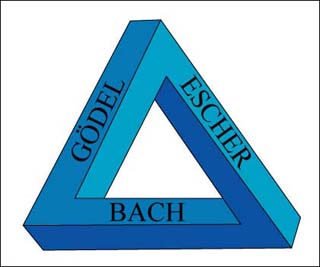Course Description
How are math, art, music, and language intertwined? How does intelligent behavior arise from its component parts? Can computers think? Can brains compute? Douglas Hofstadter probes very cleverly at these questions and more in his Pulitzer Prize winning book, “Gödel, Escher, Bach”. In this seminar, we will …
How are math, art, music, and language intertwined? How does intelligent behavior arise from its component parts? Can computers think? Can brains compute? Douglas Hofstadter probes very cleverly at these questions and more in his Pulitzer Prize winning book, “Gödel, Escher, Bach”. In this seminar, we will read and discuss the book in depth, taking the time to solve its puzzles, appreciate the Bach pieces that inspired its dialogues, and discover its hidden tricks along the way.
Course Info
Instructor
Departments

The Penrose triangle, also known as the tribar, is an impossible object. It appears to be a solid triangle made of three straight beams of square cross-section which meet at right angles. It is featured prominently in the works of artist M.C. Escher, whose earlier depictions of impossible objects partly inspired it. (Image by MIT OCW.)










